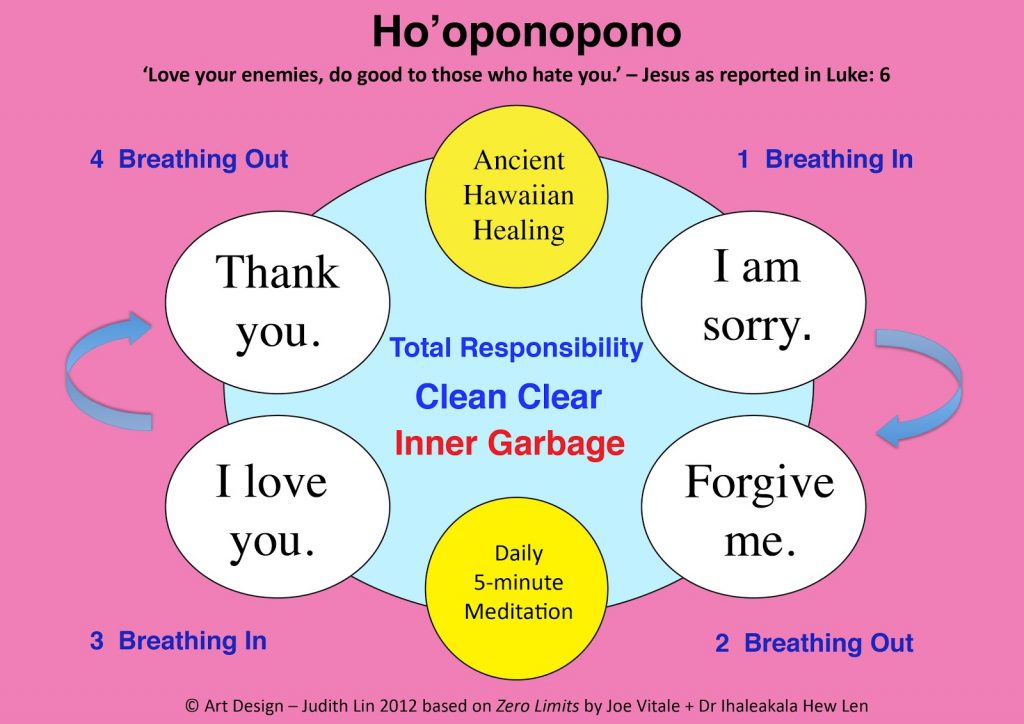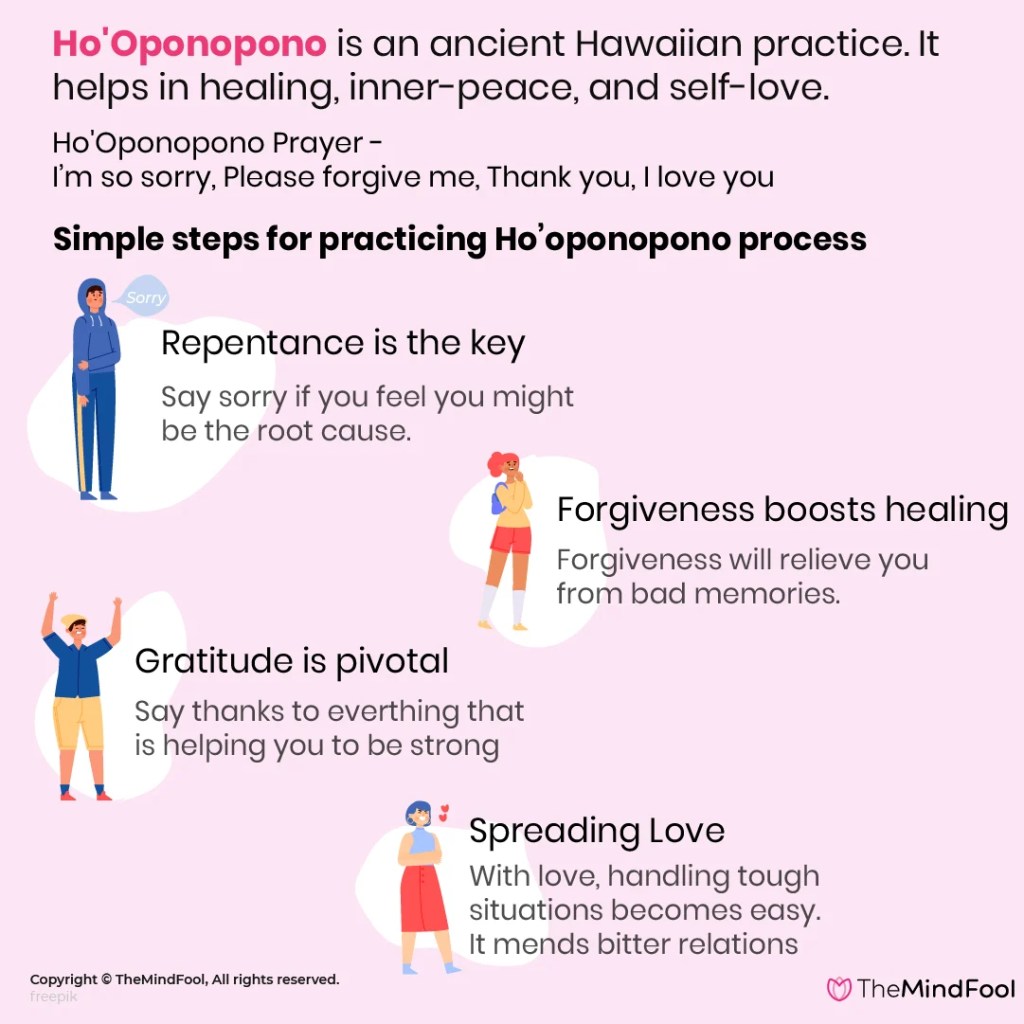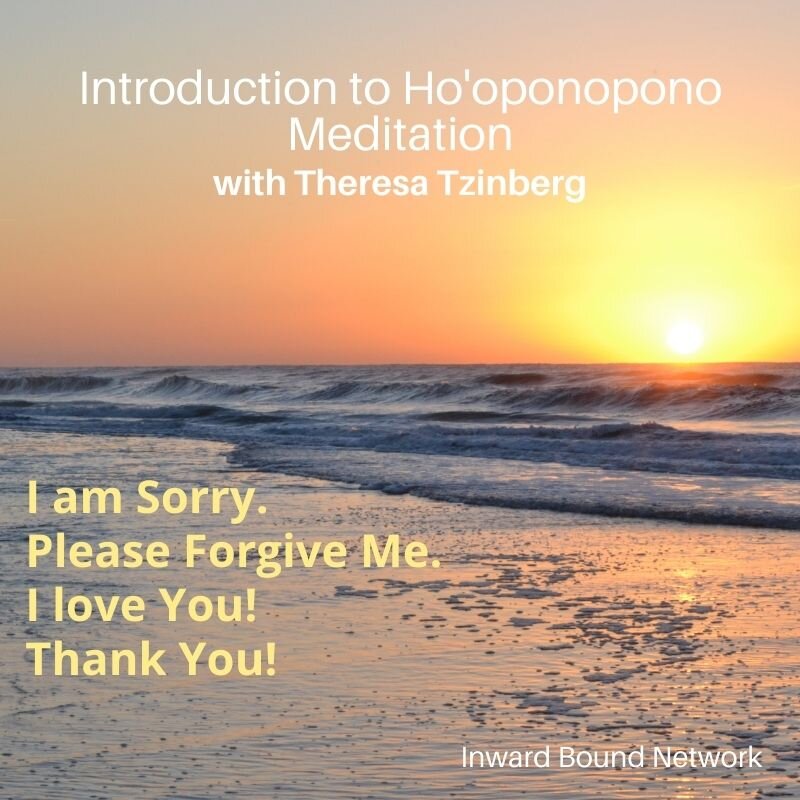Ever wondered how to achieve a state of inner peace and mindfulness? Well, have you ever heard of Ho’oponopono? It might sound like a mouthful, but don’t worry, I’ll break it down for you. Ho’oponopono is a traditional Hawaiian practice that focuses on forgiveness and reconciliation. It’s all about taking responsibility for your own experiences and healing past wounds. Now, here’s the interesting part – there is a strong connection between Ho’oponopono and mindfulness. In fact, practicing Ho’oponopono can help you cultivate mindfulness in your daily life. So, if you’re ready to dive deeper into this fascinating connection, keep reading!
When it comes to mindfulness, it’s all about being fully present in the moment and bringing awareness to your thoughts, emotions, and surroundings. It’s about observing without judgment and accepting things as they are. Now, Ho’oponopono takes this concept a step further by emphasizing the importance of self-reflection and taking responsibility for your own thoughts and actions. By practicing Ho’oponopono, you can become more aware of any negative or limiting beliefs that may be holding you back. It teaches you to let go of resentments, forgive yourself and others, and make room for healing and growth. Essentially, Ho’oponopono is like a form of mindfulness in action, as it encourages you to be present and aware of your own inner world. So, if you’re intrigued by this connection and want to learn more, keep reading our article for a deeper exploration of the link between Ho’oponopono and mindfulness.

Ho’oponopono
Ho’oponopono is a traditional Hawaiian practice of reconciliation and forgiveness. It is a process that aims to restore harmony and balance in relationships, both with oneself and others. The word Ho’oponopono can be translated as “to make right” or “to correct,” and it is rooted in the belief that our thoughts, actions, and emotions have an impact on our well-being and the overall state of the world around us.
What is Ho’oponopono?
Ho’oponopono is a holistic healing approach that recognizes the interconnectedness of all things. It acknowledges that our thoughts and actions are powerful and can create both positive and negative outcomes in our lives. The practice of Ho’oponopono involves taking responsibility for our thoughts, words, and actions, and seeking forgiveness for any harm we may have caused to ourselves or others.
At its core, Ho’oponopono is based on four key principles: repentance, forgiveness, gratitude, and love. These principles guide the process of healing and transformation, allowing individuals to release negative emotions and patterns of behavior that may be holding them back from achieving their full potential.
History of Ho’oponopono
Ho’oponopono has its roots in ancient Hawaiian culture and was traditionally practiced by family members or community leaders. It was used as a means of resolving conflicts, restoring harmony within families and communities, and promoting overall well-being. The practice was passed down through generations, with each family or community developing their own unique rituals and customs.
In recent years, Ho’oponopono has gained popularity outside of Hawaii and has been adopted by individuals seeking inner peace, healing, and personal growth. It has also been adapted and incorporated into modern healing modalities, such as energy healing and mindfulness practices.
Principles of Ho’oponopono
The principles of Ho’oponopono provide a framework for understanding and implementing the practice. Each principle plays a vital role in the process of healing and transformation.
-
Repentance: Repentance involves taking responsibility for our actions and acknowledging the impact they have had on ourselves and others. It requires a genuine desire to change and make amends for any harm caused.
-
Forgiveness: Forgiveness is an essential aspect of Ho’oponopono. It involves letting go of resentment, anger, and blame towards oneself and others. By forgiving, we open ourselves up to healing and create space for love and compassion.
-
Gratitude: Gratitude is the practice of expressing appreciation for the blessings and experiences in our lives. It helps shift our focus from negative to positive, allowing us to cultivate a mindset of abundance and contentment.
-
Love: Love is the ultimate guiding principle of Ho’oponopono. It is the force that heals, nurtures, and connects us all. By embracing love, we can transcend limitations, heal relationships, and cultivate a deep sense of inner peace.
Mindfulness
Mindfulness is a practice that involves bringing one’s attention to the present moment with an attitude of non-judgment and acceptance. It is about cultivating a state of heightened awareness and experiencing each moment fully. Mindfulness has its roots in ancient contemplative traditions, such as Buddhism, and has been scientifically proven to have numerous benefits for mental, emotional, and physical well-being.
Understanding Mindfulness
Mindfulness is often described as the art of paying attention. It involves deliberately observing one’s thoughts, feelings, sensations, and surroundings without any judgment or attachment. It is about being fully present in the here and now and experiencing life as it unfolds, instead of being lost in thoughts or worries about the past or future.
By practicing mindfulness, we can develop a greater sense of self-awareness, emotional regulation, and resilience. It allows us to cultivate a more compassionate and non-reactive stance towards ourselves and others. Mindfulness also encourages us to let go of expectations and attachments, which can lead to greater peace and contentment.
Origins of Mindfulness
While mindfulness is often associated with Buddhist teachings, the practice itself has been present in various cultures and traditions throughout history. Its roots can be traced back to ancient contemplative practices found in Hinduism, Taoism, and other wisdom traditions. However, it was in Buddhism that mindfulness became a central practice for cultivating wisdom and liberation from suffering.
The contemporary popularity of mindfulness can be attributed to the work of Jon Kabat-Zinn, who developed the Mindfulness-Based Stress Reduction (MBSR) program in the late 1970s. This program introduced mindfulness to a wider audience, and since then, it has been extensively studied and integrated into various therapeutic approaches and self-help programs.
Benefits of Mindfulness
The benefits of mindfulness are wide-ranging and have been scientifically validated through numerous studies. Some of the key benefits include:
-
Stress reduction: Mindfulness has been shown to reduce stress levels and improve overall well-being. It helps individuals develop a greater capacity to respond to stressors in a calm and composed manner.
-
Emotional regulation: Mindfulness enhances emotional intelligence by helping individuals become more aware of their emotions and develop a non-reactive stance towards them. It allows for a greater understanding and acceptance of one’s emotional experiences.
-
Improved focus and concentration: Mindfulness practice cultivates the ability to sustain attention and improve cognitive performance. It helps individuals develop a more focused and clear-minded approach to tasks and activities.
-
Enhanced relationships: Mindfulness promotes empathy, compassion, and effective communication. It allows individuals to be fully present and attentive in their interactions, leading to improved relationship quality.
-
Physical well-being: Mindfulness has been shown to have positive effects on physical health, such as reducing blood pressure, boosting the immune system, and alleviating chronic pain.

The Connection Between Ho’oponopono and Mindfulness
The practices of Ho’oponopono and mindfulness share a common thread: they both emphasize the importance of self-reflection, personal responsibility, and cultivating a deep sense of connection with oneself and others. While they may have different cultural origins and unique rituals, there are significant overlaps in their philosophy and practical application.
Similarities in Philosophy
Both Ho’oponopono and mindfulness recognize the interconnection between all things and the importance of taking responsibility for one’s thoughts, emotions, and actions. They both promote the idea that healing and transformation start from within and require a willingness to confront and release negative patterns and beliefs.
Both practices also emphasize the power of forgiveness and compassion. In Ho’oponopono, the process of repentance and forgiveness is central to the healing journey, while mindfulness encourages the cultivation of loving-kindness towards oneself and others. Both approaches recognize that forgiveness and compassion are essential for personal growth, healing relationships, and creating a more harmonious world.
Practical Application of Ho’oponopono and Mindfulness
In terms of practical application, both Ho’oponopono and mindfulness can be integrated into daily life through various rituals and exercises. Ho’oponopono often involves the repetition of specific mantras or phrases, such as “I’m sorry, please forgive me, thank you, I love you.” These mantras serve as a way to clear negative energy and emotions and cultivate a sense of gratitude and love.
Similarly, mindfulness practice often involves formal meditation, where individuals focus their attention on the breath or bodily sensations. It also extends to informal practices, such as mindful eating, walking, or even engaging in everyday activities with full presence and awareness.
Supporting Scientific Research
Both Ho’oponopono and mindfulness have gained increasing attention from the scientific community, with numerous studies exploring their effects on mental, emotional, and physical well-being. While the research on Ho’oponopono is still limited, several studies have shown promising results regarding its potential to reduce stress, improve self-esteem, and promote forgiveness.
Mindfulness, on the other hand, has been extensively studied and has a robust body of scientific evidence supporting its effectiveness. Research has shown that mindfulness practice can lead to significant improvements in areas such as stress reduction, emotional regulation, attention, and overall well-being.
How Ho’oponopono Enhances Mindfulness Practices
While Ho’oponopono and mindfulness are powerful practices on their own, they can also complement and enhance each other. The integration of Ho’oponopono into mindfulness practices can deepen the transformative potential and amplify the benefits of both approaches.
Clearing Negative Energy and Emotions
One of the key ways in which Ho’oponopono enhances mindfulness is through its focus on clearing negative energy and emotions. In Ho’oponopono, the repetition of mantras serves as a means to clear and release negative thoughts and emotions. By incorporating this practice into mindfulness, individuals can use the power of Ho’oponopono to actively let go of any destructive or harmful thoughts, thus creating space for greater clarity and presence.
Embracing Forgiveness and Compassion
Ho’oponopono’s emphasis on forgiveness and compassion can also enhance mindfulness practices. Mindfulness cultivates a non-judgmental and accepting stance towards oneself and others, and the practice of forgiveness aligns perfectly with this mindset. By integrating the principles of Ho’oponopono, individuals can deepen their capacity for forgiveness and compassion, ultimately leading to greater self-acceptance, harmony in relationships, and overall well-being.
Cultivating Self-Reflection and Self-Awareness
Both Ho’oponopono and mindfulness are powerful tools for self-reflection and self-awareness. By combining these practices, individuals can deepen their understanding of their own thoughts, emotions, and patterns of behavior. This increased self-awareness allows for greater clarity, insight, and the ability to make conscious choices that align with one’s true values and aspirations.

Integrating Mindfulness into Ho’oponopono
Just as mindfulness can enhance Ho’oponopono practice, the integration of mindfulness into Ho’oponopono rituals can bring added depth and effectiveness to the process.
Staying Present during Ho’oponopono Rituals
Mindfulness teaches us to cultivate a present-moment awareness, and this can be applied to Ho’oponopono rituals. By bringing a mindful presence to the practice of Ho’oponopono, individuals can deepen their connection to the present moment and fully engage with the intentions and healing process. This mindful presence allows for a more focused and meaningful experience, amplifying the impact of the practice.
Enhancing the Effectiveness of Ho’oponopono through Mindfulness
The practice of mindfulness can enhance the effectiveness of Ho’oponopono by creating a strong foundation of self-awareness and non-judgment. Mindfulness helps individuals recognize and acknowledge their thoughts, emotions, and patterns of behavior without attaching any labels or judgments. This non-reactive stance allows for a deeper exploration of underlying beliefs and emotions, supporting the process of healing and transformation in Ho’oponopono.
Creating a Mindful Ho’oponopono Practice
Creating a mindful Ho’oponopono practice involves intentionally infusing mindfulness into each step of the Ho’oponopono process. It begins by setting aside dedicated time and space for the practice, where individuals can cultivate a quiet and calm environment conducive to mindfulness.
During the practice, individuals can bring a mindful awareness to their breath, sensations, and emotions, allowing everything to arise and pass without attachment or judgment. This mindful presence enables a deeper connection with the mantras and intentions of Ho’oponopono, fostering a sense of healing, peace, and transformation.
Practical Tips for Combining Ho’oponopono and Mindfulness
Combining Ho’oponopono and mindfulness can be a powerful way to deepen the transformative potential of both practices. Here are some practical tips for integrating these practices into daily life:
Starting with Mindful Breathing and Relaxation
Begin your practice by bringing your attention to the breath. Take a few moments to focus on the sensation of breath moving in and out of the body. As thoughts or distractions arise, gently bring your attention back to the breath, allowing the mind to settle into the present moment.
Using Mindfulness to Enhance Ho’oponopono Mantras
During your Ho’oponopono practice, bring a mindful awareness to the repetition of mantras. Notice the sensations, thoughts, and emotions that arise as you repeat the phrases. Allow everything to be present without judgment, and continue to repeat the mantras with compassion and intention.
Incorporating Mindful Movement into Ho’oponopono Practice
Mindful movement, such as yoga or tai chi, can be integrated into your Ho’oponopono practice. Engage in these activities with full presence, noticing the sensations in your body and the movement of each breath. Allow the mindful movement to support the release of any tension or stuck energy, deepening the transformative experience of Ho’oponopono.

Case Studies: Successful Application of Ho’oponopono and Mindfulness
Numerous case studies have demonstrated the successful application of Ho’oponopono and mindfulness in various contexts. Here are a few examples:
Healing Relationships through Ho’oponopono and Mindfulness
A case study conducted with couples experiencing relationship difficulties showed that a combination of Ho’oponopono and mindfulness practices significantly improved relationship satisfaction. By incorporating mindfulness into their Ho’oponopono rituals, the couples were able to cultivate a deeper understanding, forgiveness, and compassion for each other, leading to greater harmony and intimacy in their relationships.
Stress Reduction and Mental Well-being with Combined Practices
A study conducted in a corporate setting found that employees who engaged in a combined Ho’oponopono and mindfulness program reported reduced stress levels and increased overall well-being. The practice of Ho’oponopono helped participants release any negative emotions or conflicts at work, while mindfulness practice supported their ability to stay present, focused, and calm amidst work-related challenges.
Personal Transformation and Spiritual Growth
Individuals who have integrated Ho’oponopono and mindfulness into their daily lives have reported profound personal transformation and spiritual growth. They have experienced increased self-awareness, inner peace, and a deeper connection to themselves and others. The combination of these practices has empowered individuals to release negative patterns, cultivate forgiveness and compassion, and align with their true purpose and values.
Exploring Mindfulness Techniques Linked to Ho’oponopono
There are several mindfulness techniques that can enhance the integration of Ho’oponopono practices. Here are a few examples:
Mindful Meditation for Ho’oponopono Integration
Engaging in mindfulness meditation can support the integration of Ho’oponopono principles. By practicing meditation, individuals can develop a greater capacity for self-awareness and non-reactivity, which are essential qualities in the process of Ho’oponopono. This mindfulness practice helps deepen the repentance, forgiveness, gratitude, and love that are at the heart of Ho’oponopono.
Body Scan and Visualizations in Ho’oponopono
The body scan is a mindfulness technique that involves bringing attention to each part of the body, noticing sensations, tensions, and areas of relaxation. By incorporating body scan and visualization techniques into Ho’oponopono, individuals can deepen their awareness of the physical and energetic aspects of forgiveness, compassion, and healing. This allows for a more holistic and embodied experience of Ho’oponopono.
Walking Meditation as a Mindful Ho’oponopono Practice
Walking meditation is a form of mindfulness practice that involves bringing deliberate attention to the physical sensations and movements of walking. By integrating walking meditation into Ho’oponopono, individuals can enhance their connection with the world around them and cultivate a more embodied experience of forgiveness, gratitude, and love. Walking meditation also offers an opportunity to practice Ho’oponopono in motion, allowing for a seamless integration of mindfulness and self-reflection.

Challenges and Limitations of Combining Ho’oponopono and Mindfulness
While the combination of Ho’oponopono and mindfulness can be highly transformative, there are also challenges and limitations to be aware of. It is important to approach the integration of these practices with an open mind and realistic expectations.
Resistance to Letting Go and Forgiving
One of the challenges individuals may encounter when combining Ho’oponopono and mindfulness is resistance to letting go and forgiving. It can be difficult to release deeply ingrained beliefs, painful memories, and emotional wounds. Mindfulness can help individuals become aware of this resistance and cultivate a compassionate and non-judgmental stance towards it. By embracing mindfulness, individuals can develop an increased capacity for self-compassion and acceptance, supporting the process of letting go and forgiving in Ho’oponopono.
Finding Balance between Self-Care and Self-Responsibility
While both Ho’oponopono and mindfulness emphasize personal responsibility, it is essential to find a balance between self-care and self-responsibility. Ho’oponopono encourages individuals to take responsibility for their actions and thoughts, but it is equally important to prioritize self-care and avoid self-blame or guilt. Mindfulness can support individuals in finding this balance by cultivating self-compassion and self-acceptance. It reminds individuals to be gentle with themselves and to honor their own needs and well-being while engaging in the healing journey of Ho’oponopono.
Applying Mindfulness in Intense Emotional Situations
Mindfulness can be challenging to practice during intense emotional situations, especially when faced with anger, grief, or resentment. It is important to acknowledge that mindfulness is not about suppressing or denying emotions, but rather about observing them without judgment. In such moments, individuals can use mindfulness to create a pause, allowing them to respond rather than react impulsively. By incorporating mindfulness into intense emotional situations, individuals can develop the ability to hold space for their emotions while remaining grounded and centered.
Critiques and Controversies: Examining Different Perspectives
The connection between Ho’oponopono and mindfulness is not without its critiques and controversies. It is essential to explore different perspectives and engage in open dialogue to fully understand the potential limitations and ethical considerations involved.
Critics of Ho’oponopono and Mindfulness Connection
Some critics argue that combining Ho’oponopono and mindfulness may dilute the cultural and spiritual integrity of these practices. They believe that blending these practices without fully understanding their historical and cultural context may lead to cultural appropriation and misrepresentation. It is important to approach the integration of these practices with humility, respect, and a willingness to learn from and honor their traditions.
Debates on Cultural Appropriation
The cultural appropriation of indigenous practices, such as Ho’oponopono, has sparked debates within the spiritual and mindfulness communities. Some argue that adopting and adapting these practices without proper cultural understanding and acknowledgment can perpetuate harm and reinforce systems of power and privilege. It is crucial to engage in these discussions, listen to diverse perspectives, and ensure that the integration of Ho’oponopono and mindfulness is done ethically and with utmost respect for the cultural origins of these practices.
Ethical Considerations of Combining Practices
Integrating Ho’oponopono and mindfulness raises ethical considerations, particularly around the commercialization and commodification of these practices. It is important to approach the integration of these practices with integrity, transparency, and respect for the values and principles they embody. It is also vital to recognize and support the communities and individuals who have preserved and passed down these practices, ensuring that they are honored and fairly represented.
Conclusion
The connection between Ho’oponopono and mindfulness provides a rich and transformative path for personal and collective healing. These practices share a common foundation rooted in self-reflection, responsibility, forgiveness, and compassion. By integrating mindfulness into Ho’oponopono and vice versa, individuals can deepen their understanding of themselves, enhance their relationships, and cultivate a greater sense of peace, well-being, and interconnection.
As you explore the link between Ho’oponopono and mindfulness, remember to approach these practices with openness, respect, and a genuine desire for personal growth and healing. Recognize that this integration is an ongoing journey, and it may require patience, self-compassion, and a willingness to learn from diverse perspectives. Embrace the potential for personal and collective transformation that arises from the combination of Ho’oponopono and mindfulness, and let it guide you towards a more harmonious and compassionate way of being in the world.
